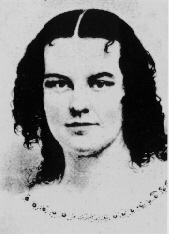Literature of Nineteenth Century Reform – Davis & Douglass
90 Author Introduction-Rebecca Harding Davis (1831-1910)
Rebecca Harding Davis was born in Washington, Pennsylvania. Seven years later, her family moved to Wheeling, Virginia (now West Virginia) where Davis saw first-hand the depredations of both the Civil War and industrialization. She attended the Washington Female Seminary, graduating as class valedictorian in 1848.
In 1861, her first publication appeared in the prestigious The Atlantic Monthly. Life in the Iron Mills won Davis immediate fame and a lifelong readership. She subsequently wrote twelve novels, hundreds of children’s stories and short stories, an autobiography, and over 200 essays and articles. She published in popular periodicals, including Harper’s Magazine and Scribner’s Magazine. From 1875 to around 1895, she wrote as a contributing editor for the New-York Tribune, resigning that position when her work was censored. She also wrote for The Independent and The Saturday Evening Post.
Figure 1. Rebecca Harding Davis

Her work raised awareness of the adverse effects of slavery, increasing industrialization, workplace labor abuses, the treatment of the insane and imprisoned, and the destructive effects of the Civil War on men and women’s lives and on landscapes, particularly in places like where she lived, Wheeling, VA (now West Virginia), which was a border state. She sought pragmatic reform for more humane treatment for the marginalized. For women, she advocated fair wages and fair work hours and, in such essays as “Low Wages for Women” and “In the Market,” encouraged women to claim control over their own lives and live independently, even without marriage. However, she neither joined any women’s rights organization nor lauded the appearance of the New Woman, that is, women who sought other “professional” vocations than marriage. In 1863, she married L. Clarke Davis. They had three children and survived mainly on the income from her work. Davis’s writing fell into neglect until 1972, when Tillie Olsen (1912–2007) republished Life in the Iron Mills in the Feminist Press.
Davis contributed to the mid-nineteenth century trend of Realism in literature, as she consciously rejected what she saw as the elitism of Transcendentalism.
Realism took the familiar and every day for its subject matter and focused on the so-called lowly and poor, as did Romanticism. Realism, however, dwelt more on the urban than rural landscape, without apprehending an animism or metaphysical force in the environment. Realism also did not infuse its depictions of reality with (often ostentatious) emotion and subjectivity, taking instead an apparently objective view—almost like that of a court report—and letting often “sordid” facts and details speak for themselves.
Davis’s Life in the Iron Mills realistically depicts unpleasant details and facts, particularly of the political, social, and aesthetic divide between laborers and factory-owners, the poor and the landed wealthy, the charitable and the hypocrite. However, she frames her story’s perspective within a Christian context in apparent hope of reform.
Source:
Becoming America, Wendy Kurant, ed., CC-BY-SA
Image Credit:
Figure 1. “Rebecca Harding Davis,” Unknown Author, Wikimedia, Public Domain.

